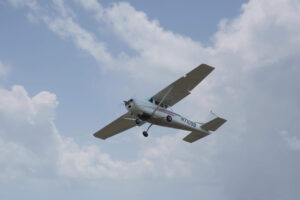Navigating through the skies requires more than just basic flight skills. As a pilot, acquiring an instrument rating is a crucial step toward enhancing your proficiency and ensuring safety in diverse flying conditions.
This ultimate guide on instrument ratings for pilots is designed to provide a comprehensive understanding of what instrument ratings entail, the certification process, flight training requirements, and how they contribute to aviation safety.
Whether you’re an aspiring pilot or looking to advance your flying career, this guide will equip you with the knowledge and insights needed to excel.
Understanding Instrument Ratings
What is an Instrument Rating?
An instrument rating is an advanced certification that allows pilots to fly under Instrument Flight Rules (IFR). This rating is essential for flying in various weather conditions, where reliance on visual references is not possible.
It empowers pilots to operate an aircraft solely based on instruments, ensuring safe and efficient navigation through clouds, fog, and other challenging environments.
Importance of Instrument Ratings for Pilots
Instrument ratings are vital for enhancing a pilot’s skills and expanding their flying capabilities.
They are especially crucial for commercial pilots who need to operate in all weather conditions and for those who wish to pursue careers in airlines or corporate aviation.
An instrument rating not only increases a pilot’s confidence but also significantly contributes to aviation safety by reducing the likelihood of accidents caused by spatial disorientation or poor weather conditions.
Requirements for Obtaining an Instrument Rating
Prerequisites for Instrument Rating
Before pursuing an instrument rating, pilots must hold at least a private pilot certificate.
Additionally, they should have a minimum of 50 hours of cross-country flight time as pilot-in-command, and 40 hours of actual or simulated instrument time, of which 15 hours must be with an instrument flight instructor.
Medical Certification
A current medical certificate is mandatory to obtain an instrument rating.
For most pilots, a third-class medical certificate is sufficient.
However, those aiming for commercial operations might require a second-class medical certificate.
Ground School Training
Ground school training is an integral part of the instrument rating process.
It covers a wide range of topics, including air traffic control procedures, instrument flight rules, navigation systems, meteorology, and flight planning.
Completing ground school ensures that pilots have the theoretical knowledge necessary to fly under IFR conditions.
Flight Training for Instrument Rating
Simulator Training
Simulator training is a valuable component of instrument rating preparation. Modern flight simulators provide realistic scenarios that help pilots practice instrument flying techniques in a controlled environment. This training enhances a pilot’s ability to handle complex situations and builds proficiency in using navigation instruments.
Flight Time Requirements
To qualify for an instrument rating, pilots must complete a specific amount of flight time under IFR conditions. This includes both actual and simulated instrument flying. The FAA requires a minimum of 40 hours of instrument time, with at least 15 hours of instruction from an authorized instrument flight instructor. Additionally, pilots need to complete cross-country flight training to demonstrate their ability to navigate using instruments over longer distances.
Checkride Preparation
The instrument rating checkride, or practical test, is the final step in the certification process. It involves an oral examination and a flight test with an FAA examiner.
Pilots must demonstrate their ability to perform various instrument flight maneuvers, including holding patterns, precision and non-precision approaches, and emergency procedures. Thorough preparation, including mock checkrides and review sessions with an instructor, is essential for success.
Navigating the Skies: Instrument Flight Rules (IFR)
Overview of Instrument Flight Rules
Instrument Flight Rules (IFR) govern the procedures for flying aircraft without relying on visual cues. IFR flight plans are filed with air traffic control (ATC) and include specific routes, altitudes, and waypoints. IFR ensures that pilots can safely navigate through poor visibility and adverse weather conditions by relying on instruments and ATC guidance.
IFR Navigation Systems
Modern aircraft are equipped with advanced navigation systems that assist pilots in IFR operations. These systems include VOR (Very High-Frequency Omnidirectional Range), GPS (Global Positioning System), and ILS (Instrument Landing System).
Understanding how to use these systems effectively is crucial for instrument-rated pilots to maintain precise navigation and ensure safe landings.
Communication and Coordination with ATC
Effective communication with air traffic control is a cornerstone of IFR operations. Pilots must be proficient in using standard phraseology and maintaining clear, concise communication with ATC.
Coordination with ATC involves receiving and complying with clearances, instructions, and updates on weather conditions and airspace restrictions.
Enhancing Aviation Safety through Instrument Ratings
Reducing Weather-Related Accidents
One of the primary benefits of an instrument rating is the ability to fly safely in adverse weather conditions. Pilots with instrument ratings are less likely to encounter accidents caused by poor visibility, thunderstorms, or icing.
By relying on instruments and ATC guidance, these pilots can navigate through challenging weather and reach their destinations safely.
Improving Spatial Awareness
Spatial disorientation is a significant risk for pilots flying in low visibility conditions. An instrument rating equips pilots with the skills to maintain situational awareness and orientation using cockpit instruments.
This training reduces the likelihood of accidents caused by spatial disorientation and enhances overall flight safety.
Emergency Preparedness
Instrument-rated pilots are better prepared to handle in-flight emergencies. The training emphasizes procedures for dealing with instrument failures, communication breakdowns, and other unexpected situations. This preparedness is critical for ensuring safe outcomes during unforeseen circumstances.
Advancing Your Aviation Career with an Instrument Rating
Career Opportunities for Instrument-Rated Pilots
Obtaining an instrument rating opens up a wide range of career opportunities in the aviation industry. Commercial airlines, corporate flight departments, and charter operators often require pilots to have an instrument rating.
This certification is also a stepping stone for those aspiring to become flight instructors, as it qualifies them to teach instrument flying.
Competitive Advantage
In a competitive job market, an instrument rating sets pilots apart from their peers. It demonstrates a higher level of skill, dedication, and professionalism.
Employers value instrument-rated pilots for their ability to operate safely in diverse conditions, making them preferred candidates for various aviation roles.
Continuing Education and Training
The journey to becoming an instrument-rated pilot doesn’t end with certification. Continuous education and training are essential to maintain proficiency and stay updated with the latest advancements in aviation technology and regulations.
Regular practice, recurrent training, and participation in industry seminars contribute to ongoing professional development.
Instrument Rating FAQs
What is the difference between VFR and IFR?
VFR (Visual Flight Rules) and IFR (Instrument Flight Rules) are two sets of regulations governing how pilots operate aircraft. VFR relies on visual references and is suitable for clear weather conditions. IFR, on the other hand, relies on instruments and ATC guidance, allowing pilots to fly in poor visibility and adverse weather.
How long does it take to get an instrument rating?
The time required to obtain an instrument rating varies based on factors such as prior flight experience, availability of training resources, and individual learning pace. On average, it can take several months to a year to complete the necessary training and pass the checkride.
How long does it take to get an instrument rating?
No, a private pilot cannot legally fly in clouds or under IFR conditions without an instrument rating. Operating in such conditions without the proper certification poses significant safety risks and is prohibited by aviation regulations.
What are the costs associated with obtaining an instrument rating?
The cost of obtaining an instrument rating includes expenses for flight training, ground school, simulator sessions, and the checkride. These costs can vary widely depending on the flight school, location, and individual circumstances. On average, the total cost can range from $8,000 to $15,000.
What are the costs associated with obtaining an instrument rating?
While an instrument rating is not strictly required for a commercial pilot certificate, it is highly recommended. Most commercial flying jobs, especially those involving passenger transport, require an instrument rating due to the need to operate in various weather conditions and maintain high safety standards.
What are the costs associated with obtaining an instrument rating?
Instrument-rated pilots should regularly practice IFR procedures to maintain proficiency. The FAA recommends at least six instrument approaches, holding procedures, and intercepting and tracking courses using navigational systems within the preceding six months to remain current.
Conclusion
Obtaining an instrument rating is a significant milestone in a pilot’s career, offering enhanced skills, greater safety, and expanded career opportunities. This ultimate guide on instrument ratings for pilots has covered the essentials of what an instrument rating entails, the certification process, and the benefits it brings to aviation safety. By investing in thorough training, continuous practice, and staying updated with industry advancements, pilots can achieve mastery in the skies and navigate any challenge with confidence.




